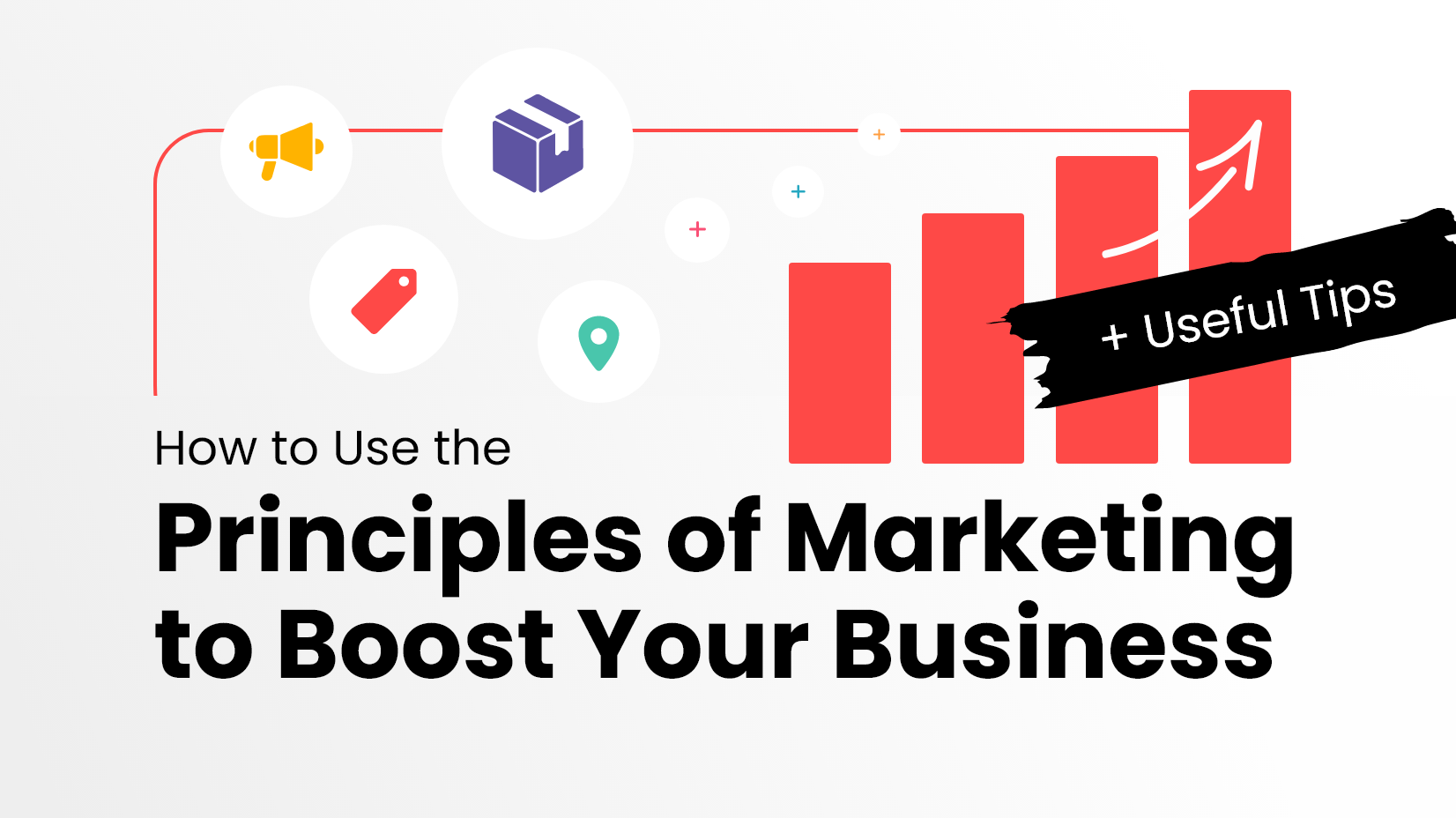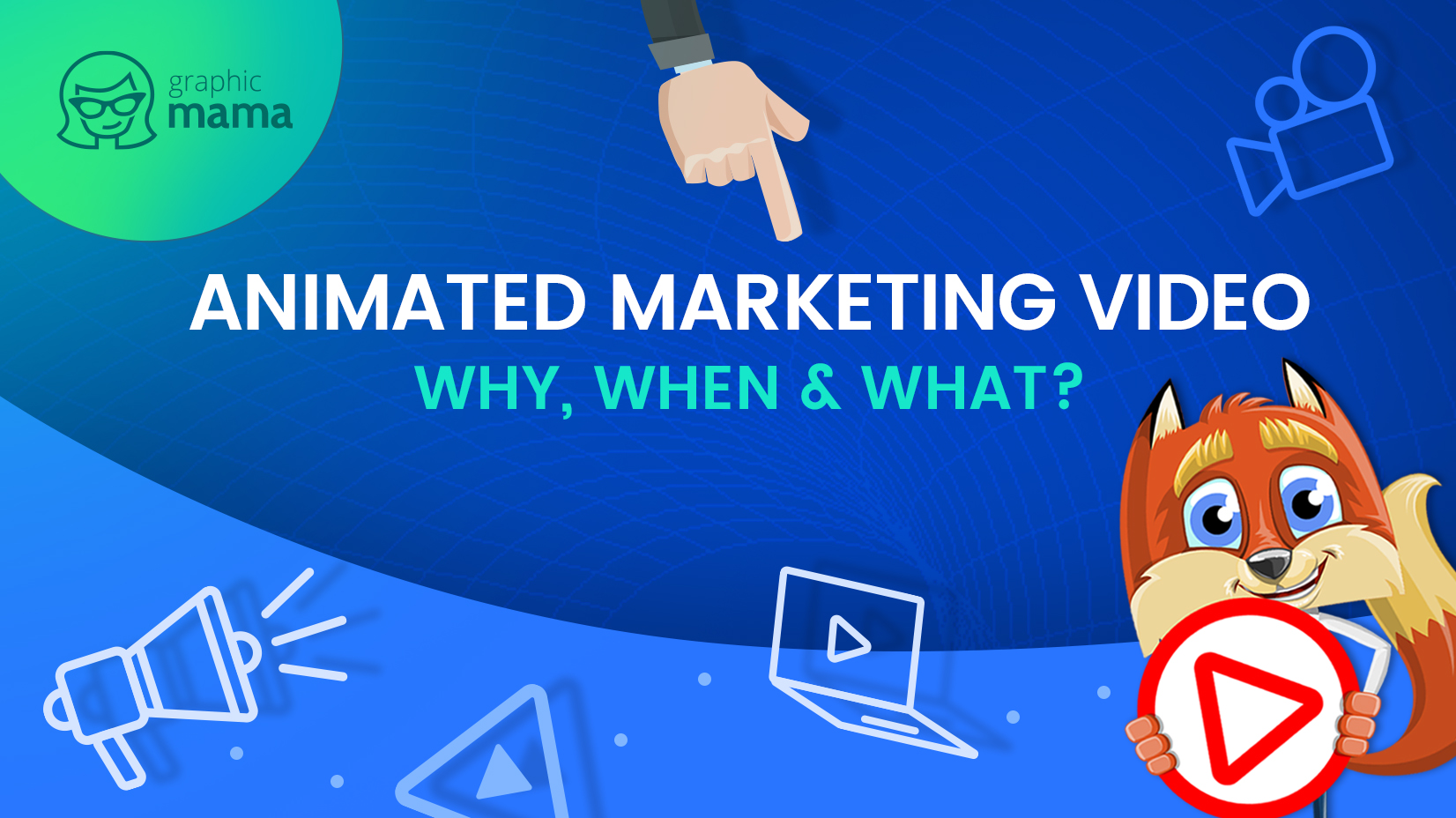
Marketing is the mechanism in which suppliers aim to understand what their potential client needs, wants, and is willing to spend money on. By perfecting the principles of marketing, you will be able to convey how you meet the demands and give people a reason to buy from you. One of the best ways to start is to go online.
Article Overview:
1. What are the Principles of Marketing?
2. The 4 Basic Principles of Marketing
3. The 7 Principles of Marketing
1. What are the Principles of Marketing?
Even when you offer revolutionary solutions, you still need to make your presence known and build trust with your audience. The oversaturated market with competition in your way is also something to overcome when you start your business.
The principles of marketing are what a business looks at when it wants to improve or create a good marketing strategy that will be profitable in the long run.
2. The 4 Basic Principles of Marketing

4 Principles of marketing
These are the original principles that successful companies have been using since the 1960s. They have stood the test of time and continue to prove themselves today.
Principle 1: Product
The products are the services your business provides to the market. If you want them to sell and be profitable you will need to consider a couple of things:
Demand
No matter how good and unique the service is, you can only make it successful and profitable if there is a market for it.
Quality
Your product should always be as advertised. In this age of information if you are selling bad products the negative reviews can hurt your reputation and ruin your future sales.
Uniqueness
This is no easy task in an oversaturated market. However, there are still ways to be unique and stand out from the competition.
- Have a product or service never seen before
For example, cars have been around for a while, but the company Uber took this infrastructure and solved a problem in a way that was not seen before at that time. If you have a good idea you are passionate about and believe it solves a problem enough people have- go for it!
- Take an existing product or service and improve its quality or offer something new
You don’t have to invent the next future gadget to be successful. There could be a part, design, method, or mechanism that you can improve, which is also a viable business model. Razer didn’t invent the mouse or headphones, but they keep making better ones than their competitors with new technology inside and that’s why they are so popular.
Reliability
The longer your customers can use your product after they purchase it- the better. This is especially true for physical products that suffer the consumerism culture the most. Unfortunately, many manufacturers tend to build products with great specs but with a short life span. There are two reasons for that: quick profit (for short-term businesses that don’t rely on building reputation), or preparing the market for a newer model of the same product ( for big companies whose brand already works in their favor and can afford the scam without damaging their reputation). Needless to say, you will build trust and respect if you choose to make reliable, high-quality products that last.
Another factor that shouldn’t be neglected in some cases is the ease of use. Your customers should not have any problem with using, setting up, or finding information about the product. A good instruction manual is a thing companies often forget. Another alternative is a scannable QR code, leading to complete instructions and Q&As.
Principle 2: Price
There are 3 driving factors that you should consider before choosing any pricing:
Cost-based pricing
This method uses the cost of the product to determine the price. The product cost includes the product itself, but also shipping, advertising, and others. This is a good starting point when trying to figure out how to price something, but should be used alongside the other two methods.
Competitor’s costs
Before choosing your pricing, you should look at similar products or services from your competitors. If their prices are much lower than yours, people might not want to buy from you. However, if your prices are too low you will be getting lower profit margins than your competitors.
This should be taken with a grain of salt because it is always possible that your competitors didn’t do their research beforehand, so you need to have multiple reference points.
What your customers are willing to pay
The customers don’t care what your production costs are or how much you spend on marketing. The only thing that is important to them is if the product is as described, reliable and affordable (but not cheap, because the cost is often associated with quality).
Principle 3: Place
Physical stores
Having a store and people walking around it is a promotion by itself. It is where you display what you offer and sell it.
Online marketplaces
Online stores are as important as physical ones. A visually-pleasing comprehensive website goes a long way and has its own advantages. You can build an interactive journey for your visitors through your services, social proof, brand philosophy all the way down to the final logical conclusion: the CTA. Purchasing your services online should be convenient and quick.
Having your own business website isn’t the only way. You can list your physical (or downloadable) products on Amazon, eBay, and Etsy.
Principle 4: Promotion
This refers to the process of making potential customers aware of your product or service. It should show the product in its best light and convince the customer that they need it.
Organic content marketing
Writing search engine optimized (SEO) posts and descriptions is a free way of promotion. You need to target highly searched keywords, which you can find with the free google keyword planner tool.
Paid advertising
The age of TV commercials and billboards is coming to an end. Instead, online advertising can target your specific market segment better. The most popular services are Google ads and Facebook ads.
Social media marketing
Having a good social media presence is something you absolutely need to invest resources in. Using Facebook, Instagram, YouTube, Twitter, and TikTok will help you get closer to your audience, learn their valuable feedback, and even build a community.
Email marketing
This is a simple passive one. When someone goes on your website and creates an account or purchases something, they will receive promotions, news, blog articles, events, etc. This type of passive interaction also increases the chances of your visitors returning.
Influencer marketing
Another popular way to advertise your services is through influencers with a great number of followers. They can promote what you offer to their loyal fanbase. Influencers’ videos often go viral which would be a huge benefit for your services. The negative side is that is nowhere near as focused as when using just normal ads.
Public relations
Being close with your customers is very important. Bigger businesses need PR agents for this job and you might do too.
Event marketing
- Online live events
- You can implement scarcity tactics to make people feel that they will be missing out if they don’t join.
- The cost on your part is minimal.
- You are not restricted by space so you can have as many people as you want.
- Physical fairs, events, and trade shows
- If you participated last year have photos or videos.
- It’s a great way of collecting testimonials. By far the best method is to film short videos of people interacting with your products and showing positive emotions.
- Facebook events
- This is by far one of the most popular places to organize events. It doesn’t matter if it is online or a physical one, having a Facebook event set up will let customers know about it and will provide information for anyone interested.
3. The 7 Principles of Marketing
With the evolution of marketing, in 1981 the principles were extended to 7Ps, with Process, Physical Evidence, and People added to the basic 4Ps. Nowadays, most companies prefer the 7Ps. Let’s take a look at them:

7 principles of marketing
Principle 5: People
Hiring the right person for the right position is a key factor in your success. Make sure that your managers have good communication and organization skills. Your customer support staff should also know how to talk to clients and help them efficiently. After all, high customer satisfaction means good long-lasting relations.
Principle 6: Process
Optimizing this principle within your business will reduce your costs, handling, and production time while increasing your productivity. This includes finding suitable software to automate a huge portion of your tasks and creating specific standards for the process for everyone to be on the same page.
Principle 7: Physical Evidence
This refers to social and physical proof.
- Testimonials: You can add a rating method, comment section, and social buttons for people to show their experience with what you offer. This creates social proof among potential clients and increases your exposure.
- Online demo: If your product is physical this will include photos, video or 3d models, or virtual tours. If it is virtual you can get really creative with you you present it, depending on the nature of the product or service.
- Seeing in a physical store: Being able to see in person, touch, and know the quality and materials better than a picture can tell.
- Shipping and packaging: Fast shipping or distributors in every target country you sell to. Another thing to consider is how your packaging looks. Great package design is a huge part of your branding.
In conclusion
It doesn’t matter if you are just starting a business or have one already, by understanding the principles of marketing, and how and where to apply them you can have the upper hand in this modern world, ruled by technology and algorithms. It is likely that your business model won’t need all of the principles of marketing, or even that you will be using them in the same way other businesses choose to apply them. The best thing you can do is research as much as possible and draw inspiration to create the best marketing strategies for your specific business.
You may also be interested in some of these related articles:













